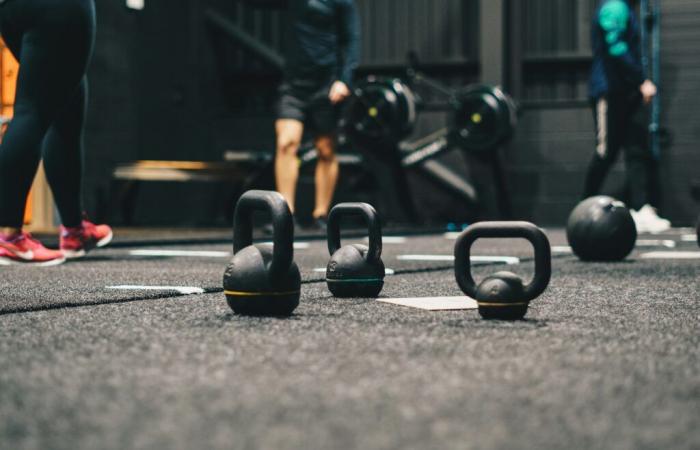The industry of the deport It was seen trapped in the Tariff war between USA y Chinareactivated this month with punitive rates of up to 145 percent imposed by Washington on Chinese products such as running ribbons, balls and gym equipment.
Beijing responded with rates of up to 125 percent on American goods and restrictions on the export of rare earths, which complicates the production of advanced sports technology.
This weekend, both powers will hold their first official encounter from the beginning of the tariff conflict, with the aim of stopping an escalation that is already destabilizing global trade and threatens to fully affect the economic and cultural ecosystem of professional sport.
Rising costs, offer in crisis
The impact is already visible in Of.u.where Retail chains like Target and Walmart have canceled requests for Sports articles due to Encrying of Imports chinas.
Products before affordable – as jumping ropes or fitness gloves – have duplicate their prices; A resistance tape that cost 10 dollars is now sold for more than 20, while a $ 100 dollars with tariffs exceed 300 to the consumer.
This extra cost also moves to gyms fees, which could increase to 40 percent, and has generated a waterfall effect on demand, employment and logistics chains.
Companies such as Nike, Adidas y Under Armour They registered Falls of more than 10 percent in their Actions The same day of the announcement of the new tariffs, and are redirecting their production to countries such as Vietnam or Indonesia.
However, this relocation is expensive and slow, which leaves exposed to the US market in the short term.
According to the US Sports Goods Association, each home could spend between 3,800 and 6,600 additional dollars a year only in Sports products.
At the same time, small trade also suffers: factories A Texas he cerrado, gyms They face lower occupation and a risk of loss two million jobs If the tensions continue.
Chinese tariff and cultural response
While the United States suffers an inflationary wave in its sports market, China Opt for a longer -range structural and cultural strategy.
Companies like Shuhua and Impulse, which supplied 36 percent of the running ribbons and 33 percent of the Imported fitness equipment By the US in 2024, they have seen paralyzed their requests.
Some, like Zhongyan Sports, redirect are production to the domestic market or destinations such as Saudi Arabia, Australia or Mexico.
But beyond commercial containment, Beijing raises a symbolic counterattack: at the proposal of several experts, a possible “rate cultural“30–50 percent on American sports licensesfocused on Rights of NBA, UFC or NFL.
The impact would be considerable: the NBA obtains more than 5 billion dollars annually in China, and up to 30 percent of its retransmission income comes from that market.
An offensive of this type would erode its digital and commercial presence, and would put personal sponsorships of stars such as LeBron James or Stephen Curry at risk.
At the same time, China reinforces are mercado internal. In March, before the forecasts of a possible tariff conflict, four official agencies – among them the Popular Bank – launched a financial support guide for sports development.
Consumer loans, Bonds in Yuan Digital and Club financing, events and infrastructure are promoted.
The message is clear: before the external barriers, China will shield its sports industry, promote local innovation and seek to consolidate its ‘Soft Power’ with brands, leagues and its own intellectual property.
Sports trade restructuring
The tariff war has not dismantled the sports supply chain, but it has forced its redesign.
In 2024, according to Chinese customs data, Chinese exports of sporting articles exceeded 28 thousand 396 million dollars (+6.77 percent), with the US still as the main destination (8 thousand 928 million dollars, +12.53 percent).
However, this leadership wobbles: exporters such as Zheng, consulted by Sina Finance, have reduced their exposure to the US market from 90 to 30 percent, prioritizing the domestic market and destinations such as Vietnam, Brazil, Poland and Indonesia.
“Losing that 30 percent,” he explains, in reference to the current US participation in the global purchases of Chinese sports products, “is manageable.”
The data show a clear transition. The US led in shopping tapes (491 million dollars) and gym equipment (1,654 million dollars), but sectors such as footwear (-6.9 percent) and sportswear (-4.45 percent) were already in decline before the conflict, displaced by Vietnam and Indonesian suppliers, which today manufacture more than 80 percent of the world sports footwear.
On the other hand, products such as trotters (+37.08 percent) and intelligent equipment (+22.13 percent) grow, especially in markets such as Saudi Arabia.
This rebalance redefines China’s profile: from low cost provider to advanced sports technology manufacturer, with advantages in quality and flexibility.
Brands such as Anta, Li-Ning and XTEP assemble products in Mexico to take advantage of the T-MEC and avoid tariffs.
In 2024, the sector lived a transition: drop in traditional areas, boom in digital fitness and domestic consumption.
By 2025, according to Sina Finance, the global sports industry is emerging as more diversified, less
dependent on a single commercial route and better prepared before future geopolitical tensions.
With EFE information






